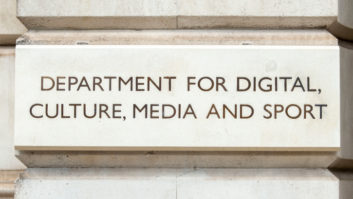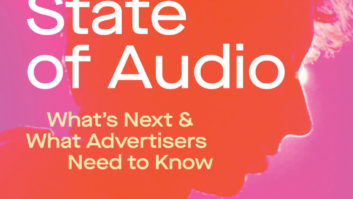A Rosy Future for Radio
Apr 1, 2006 12:00 PM, Chriss Scherer, editor
Here we are, days away from the start of the biggest broadcasting event of the year. Like you, when I get to the convention floor, I expect to see continued activity about digital radio. As usual, HD Radio will be the main topic, but there will be touches of DRE and DRM, with maybe a hint of Cam-D in the air. Multicasting, enhanced data capabilities and the latest generation of hardware and software designs will all be in the mix. We’re deep into digital terrestrial radio, and as it has been over several years, digital radio will be bigger news than ever.
Talk of IBOC is everywhere. We even see more attention to HD Radio in newspapers and consumer magazines. I have included some aspect of it in this column in all but one issue over the past year. Recently, data released in mid-March offered even more hope to the HD Radio supporters and greater dismay to the opponents.

Bridge Ratings released its updated projections of consumer use of various forms of radio and digital media. The projections run through 2020, and show steady increases in usage for HD Radio, XM, Sirius and mobile phone streaming, and leaps in usage of Internet radio and wireless Internet usage.
Naturally, the HD Radio proponents focused on the projection that HD Radio may have two million listeners in 2008 with a long-term projection of 46 million listeners by 2020. These projections make 2020 the year that HD Radio will equal the usage of Sirius or XM.
The part that seems to have been ignored is that Internet radio and wireless Internet are expected to jump to more than 200 million users by 2020. For Internet radio, this is a tripling in usage from 2006, while for wireless Internet it represents nearly a 12 times increase in usage. The jump for HD Radio from 2006 to 2020 looks impressive at nearly 83 times, but the actual number of projected HD Radio users in 2020 will be just more than half the number of Internet radio users today.
To me, these projections are locked on current technology. It’s impossible to project usage for something that is not yet invented, but we have already seen the rapid acceptance of portable media players and devices with consolidated functions including telephone, PDA, media player, GPS and more.
Entire cities are working on wireless Internet coverage plans. Wi-max is getting noticed for what it could offer. Who knows what else may be in place by 2020.
This all means that that HD Radio, DRE and Cam-D may have shorter lives than some think. Radio stations must begin to look beyond the integrated function of creating and delivering programming to the masses. The two functions are separate. Digital radio deals with the final delivery. A radio station is a content provider with one delivery channel tied to it. There are lots of other delivery channels available.
Some radio groups are already considering these alternative delivery options. At the end of 2005, Clear Channel made it known that it was looking at alternate distribution methods for its content, such as Yahoo, Apple and Microsoft. NPR has also looked into alternative channels, including satellite radio and cell phone streaming.
As further evidence that these alternate delivery channels have some promise, several rating services are including streaming and downloaded content in their measurement packages.
There are lots of companies installing HD Radio systems. There are many who are waiting to see what will eventually happen. Both strategies are based on an individual company’s goals, plans and vision. For Clear Channel and NPR, it appears to be as simple as identifying another outlet.
More Online
Access a summary of the Bridge Ratings survey at
http://beradio.com/currents/radio_currents_031306/index.html#bridge
E-mail:[email protected]
Fax:913-514-7201









